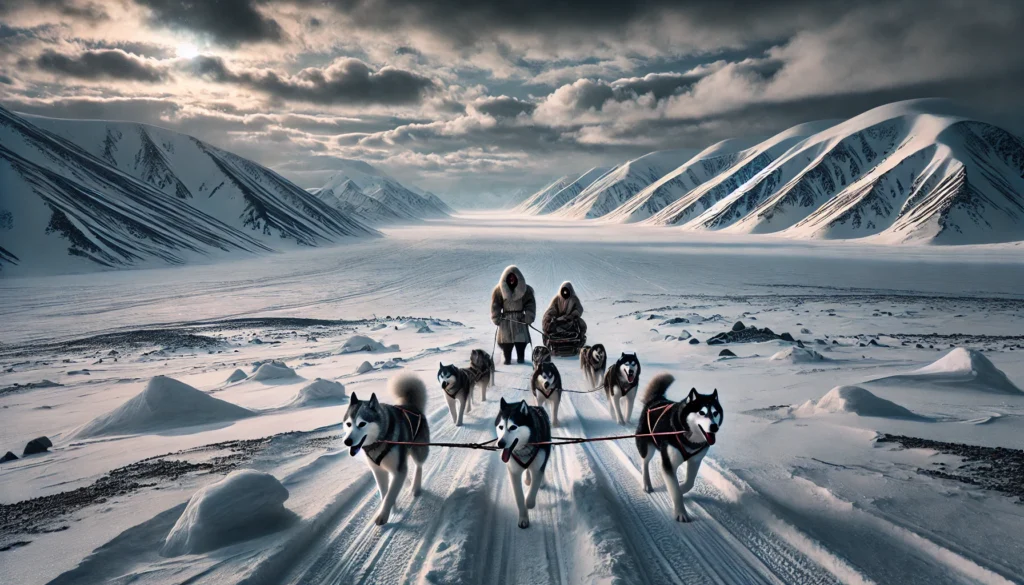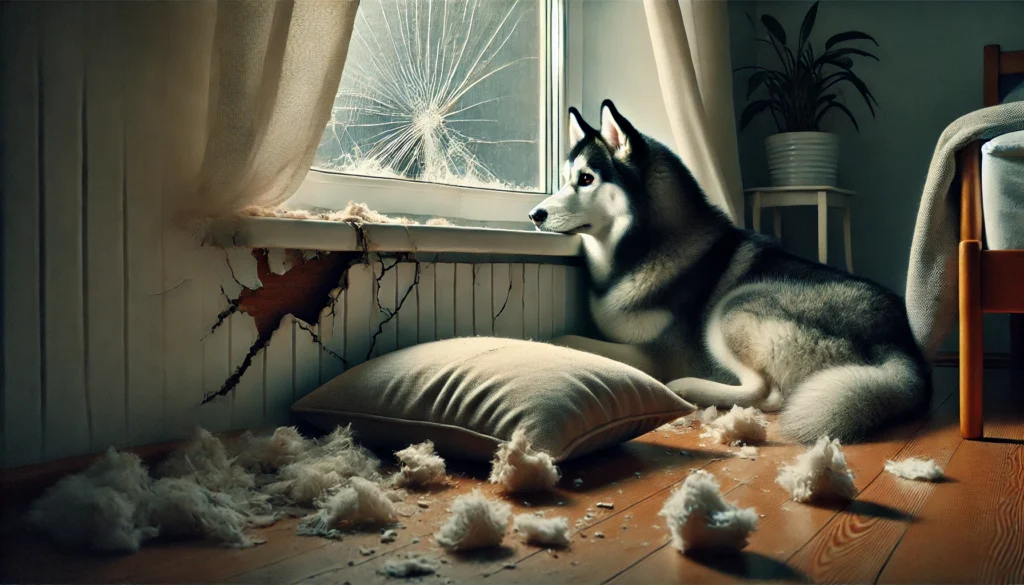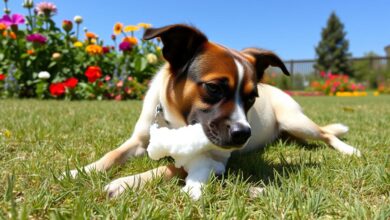Understanding Husky Dog Behavior: A Complete Guide

Are you the proud owner of a husky or considering bringing one into your family? Understanding husky dog behavior is key to ensuring a happy and fulfilling relationship with your furry friend. In this complete guide, we will delve into the unique characteristics and traits that make huskies one of the most fascinating breeds out there.
Huskies are known for their striking appearance and captivating blue eyes, but there is so much more to discover beneath the surface. From their history as sled dogs in the Arctic to their strong pack mentality, huskies have a rich heritage that has shaped their behavior. By understanding their instinctual drives and specific needs, you can provide them with the right environment and training to thrive.
In this comprehensive guide, we will explore the various aspects of husky behavior, including their social nature, distinctive vocalizations, and propensity for escape attempts. We will also provide practical tips and techniques to effectively communicate and build a strong bond with your husky.
Get ready to embark on a journey of discovery, as we decode the intricacies of husky dog behavior and equip you with the knowledge to create a rewarding and harmonious relationship with your beloved companion.
The history and origins of Husky dogs
The Husky breed has a rich and fascinating history that dates back centuries. These resilient canines originated in the harsh, snowy landscapes of Siberia, where they were prized by the indigenous Chukchi people as sled dogs and companions. The Chukchi relied on the Husky’s incredible strength, endurance, and adaptability to navigate the treacherous terrain and harsh weather conditions of the Arctic region.
Over time, the Husky breed evolved to thrive in these demanding environments, developing a thick, insulating coat, a powerful build, and an unwavering work ethic. They were essential to the Chukchi’s way of life, helping to transport supplies, pull sleds, and provide warmth and companionship during the long, bitter winters. The Chukchi’s deep respect and affection for these remarkable dogs is evident in the rich cultural traditions and legends that have been passed down through generations.

In the late 19th century, as the Western world became increasingly fascinated with the Arctic region, the Husky breed gained global recognition. Explorers, adventurers, and dog sled racing enthusiasts sought out these hardy, high-spirited dogs, and the Husky’s popularity began to spread beyond its Siberian roots. The breed’s introduction to North America, particularly during the Alaskan Gold Rush and the early 20th-century expeditions to the North Pole, cemented its status as a beloved and iconic canine companion. Today, the Husky’s enduring legacy as a symbol of strength, resilience, and the adventurous spirit continues to captivate people around the world.
Physical characteristics and breed traits of Husky dogs
Huskies are known for their striking and distinctive appearance, which reflects their evolution as sled dogs in the harsh Arctic environment. These medium-sized dogs typically stand between 21 and 24 inches tall at the shoulder and weigh between 35 and 60 pounds, with females generally being on the smaller side.
One of the most recognizable features of the Husky breed is their thick, double-layered coat, which provides exceptional insulation and protection against the bitter cold. The outer coat is straight and coarse, while the undercoat is soft and dense, creating a fluffy, “wolf-like” appearance. Huskies come in a variety of colors, including black, white, gray, and a striking combination of these hues, often with distinctive facial markings and striking blue eyes.
Beyond their physical attributes, Huskies are known for their boundless energy, intelligence, and strong-willed nature. They are highly active, athletic dogs that thrive on physical and mental stimulation. Huskies are often described as being “cat-like” in their independence and playful, mischievous behavior. They possess a deep-rooted instinct to explore, wander, and seek out new experiences, which can sometimes lead to challenges for their owners.
Huskies are also renowned for their exceptional endurance and stamina, a legacy of their sled dog heritage. They can run for long distances without tiring and possess a natural inclination for pulling and hauling. This innate drive to work and the breed’s natural athleticism make Huskies well-suited for a variety of canine sports and activities, such as sled racing, skijoring, and canicross.
Understanding the pack mentality of Husky dogs
At the core of Husky behavior is a deep-rooted pack mentality that has been shaped by their evolutionary history as sled dogs. In the harsh Arctic environment, Huskies lived and worked in close-knit groups, relying on each other for survival, protection, and the successful completion of their tasks. This pack-oriented mindset continues to shape the social dynamics and behavioral patterns of Huskies today.
Huskies are highly social animals and thrive on being part of a “pack,” whether that’s their human family or a group of canine companions. They have a strong desire to belong and a keen understanding of their place within the hierarchy. Huskies often form close bonds with their owners and other household members, seeking out affection, attention, and a sense of belonging.

This pack mentality also manifests in the Husky’s tendency to be vocal and expressive. Huskies are known for their distinctive howls, which they use to communicate with their pack and assert their presence. They may also engage in “talking” or “wooing” behaviors, such as whining, grumbling, and even barking, as a way to express their needs, emotions, and desire for interaction.
Understanding the Husky’s pack-centric nature is crucial for owners, as it shapes their social and behavioral needs. Huskies thrive when they are provided with ample opportunities for social interaction, both with their human family and, when appropriate, with other canine companions. Neglecting this fundamental aspect of Husky behavior can lead to behavioral issues, such as separation anxiety, destructive tendencies, and even aggression.
Common behavioral issues in Husky dogs
While Huskies are generally good-natured and affectionate companions, their strong-willed nature and innate tendencies can sometimes lead to behavioral challenges if not properly addressed. Understanding and proactively addressing these common behavioral issues is essential for Husky owners to ensure a harmonious and fulfilling relationship with their furry friends.
One of the most notable behavioral traits of Huskies is their propensity for escape attempts. Huskies are natural-born explorers with a strong instinct to roam and wander. They are highly adept at digging, jumping, and even climbing to find a way out of their enclosures or yards. This can be a significant concern for Husky owners, as these dogs may inadvertently put themselves in harm’s way by wandering onto busy roads or getting lost. Proper containment, training, and providing sufficient physical and mental stimulation are crucial in mitigating this behavior.
Another common behavioral issue with Huskies is their tendency towards destructive behavior, particularly when they are bored or under-stimulated. Huskies have an abundance of energy and a natural inclination to chew, dig, and engage in other destructive activities. If their physical and mental needs are not met, they may turn to these behaviors as a way to release pent-up energy, often resulting in damaged furniture, clothing, or other household items.
Huskies can also be prone to barking, howling, and other vocalizations, which can be a source of frustration for owners, especially in urban or residential areas. While these behaviors are a natural part of their pack-oriented nature, excessive vocalization can become a nuisance. Addressing the underlying causes, such as boredom, anxiety, or a need for attention, is essential in managing this behavior.
Lastly, Huskies may exhibit a tendency towards stubbornness and independence, which can make training and obedience challenging. Their strong-willed nature and innate desire for autonomy can lead to resistance or selective listening during training sessions. Patience, consistency, and positive reinforcement-based training methods are crucial in overcoming these behavioral hurdles and fostering a well-behaved Husky companion.
Training techniques for Husky dogs
Effective training is essential for Husky owners, as these intelligent and energetic dogs require a thoughtful and consistent approach to channeling their natural tendencies in a positive direction. Given their independent nature and strong-willed personality, traditional training methods may not always be the most effective. Instead, Husky owners should focus on positive reinforcement-based techniques that tap into the breed’s innate desire for praise, affection, and engagement.
One of the key training strategies for Huskies is to establish a strong bond and trust with your canine companion. Huskies thrive on positive interaction and are highly responsive to owners who can demonstrate leadership, consistency, and a genuine interest in their well-being. By building a strong foundation of trust and respect, Husky owners can more effectively communicate their training goals and expectations.
Clicker training can be an especially effective tool for Huskies, as it allows for precise feedback and reinforcement of desired behaviors. The distinct “click” sound, followed by a reward, helps Huskies understand exactly what behavior is being rewarded, making the learning process more engaging and efficient. This training method also taps into the Husky’s natural curiosity and problem-solving abilities, encouraging them to actively participate in the training process.
Incorporating fun, interactive games and activities into the training regimen can also be highly beneficial for Huskies. These intelligent dogs thrive on mental stimulation and enjoy the challenge of learning new tricks and commands. By making training sessions enjoyable and rewarding, Husky owners can foster a positive association with the learning process and maintain their canine’s enthusiasm and engagement.
Additionally, patience and consistency are crucial when training Huskies. These dogs can be stubborn and may require repetition and reinforcement to fully grasp new commands or behaviors. Owners should be prepared to invest time and effort into the training process, breaking down complex tasks into smaller, more manageable steps and providing ample praise and rewards along the way.
Exercise and mental stimulation for Husky dogs
As high-energy, athletic dogs, Huskies have significant exercise and mental stimulation needs that must be met to ensure their overall well-being and prevent behavioral issues. Failing to provide adequate physical and mental outlets can lead to destructive behaviors, excessive barking, and other undesirable traits.
Huskies are bred for endurance and thrive on regular, vigorous exercise. A daily routine of long walks, jogs, or runs is essential for these dogs, as it allows them to expend their abundant energy and maintain physical fitness. Owners should be prepared to commit to at least 60-90 minutes of intense physical activity per day, tailored to the individual Husky’s age, fitness level, and energy requirements.
In addition to physical exercise, Huskies also require substantial mental stimulation to prevent boredom and frustration. These intelligent dogs possess a strong desire to work and problem-solve, and they benefit greatly from engaging in activities that challenge their cognitive abilities. Owners should incorporate a variety of interactive toys, puzzle feeders, and training exercises into their Husky’s daily routine to keep their minds active and engaged.

Canine sports and activities, such as sled racing, skijoring, canicross, and agility training, can be excellent outlets for Huskies, as they tap into the breed’s natural instincts and provide both physical and mental stimulation. Participating in these activities not only helps to meet the Husky’s exercise needs but also strengthens the bond between the dog and their owner, as they work together to achieve a common goal.
It’s important to note that the exercise and mental stimulation requirements for Huskies may vary depending on the individual dog’s age, health, and energy level. Owners should be attentive to their Husky’s cues and adjust their activity levels accordingly, ensuring that their canine companion remains happy, healthy, and content.
Husky dogs and socialization
Socialization is a crucial aspect of Husky ownership, as these dogs thrive on positive social interactions and can face challenges if not properly exposed to a variety of people, animals, and environments. Huskies are naturally curious and friendly, but their strong pack mentality means that they require careful socialization to develop well-rounded and well-adjusted personalities.
From a young age, Husky puppies should be introduced to a wide range of experiences, including different sights, sounds, and social situations. This early exposure helps to shape their confidence, curiosity, and ability to adapt to new situations. Owners should take their Husky puppies to puppy classes, socialization events, and other controlled environments where they can interact with people, other dogs, and various stimuli in a positive and rewarding manner.
As Huskies mature, it’s important to continue providing them with opportunities for socialization. Regular trips to the dog park, playdates with canine friends, and exposure to new people and environments can help to reinforce their social skills and prevent the development of fear, anxiety, or aggression. Owners should be mindful of their Husky’s body language and comfort level, and be prepared to remove them from situations that may be overwhelming or overstimulating.
Socialization is not just about exposing Huskies to new experiences; it’s also about teaching them appropriate social behaviors. Owners should work on training their Huskies to be calm, polite, and responsive in social situations, reinforcing positive interactions and redirecting any undesirable behaviors. This helps to ensure that their Husky can confidently navigate the world around them and build positive relationships with both humans and other animals.
By prioritizing socialization, Husky owners can help their canine companions develop into well-adjusted, confident, and friendly companions who are able to thrive in a variety of social settings. This not only benefits the Husky’s overall well-being but also enhances the bond and trust between the dog and their human family.
Husky dogs and separation anxiety
Separation anxiety is a common behavioral issue that can affect Huskies, particularly if they are not properly prepared for periods of alone time or if their social and emotional needs are not being met. As pack-oriented animals, Huskies can struggle with being separated from their human family, leading to distress, destructive behaviors, and other problematic outcomes.
Huskies are highly sensitive to changes in their environment and routine, and they can become anxious or upset when left alone for extended periods. This can manifest in a variety of behaviors, such as excessive barking or howling, destructive chewing, scratching, or even attempts to escape the home. Owners must be proactive in addressing separation anxiety to prevent these issues and ensure the well-being of their Husky companion.

One of the key strategies for managing separation anxiety in Huskies is to gradually acclimate them to being alone. This involves slowly increasing the duration of time the Husky is left alone, starting with short intervals and gradually building up to longer periods. Owners should also provide their Husky with engaging toys, puzzles, or food-dispensing devices to occupy their attention and alleviate boredom during these solo periods.
Establishing a consistent routine and providing ample physical and mental stimulation can also help to mitigate separation anxiety in Huskies. Ensuring that their daily exercise and playtime needs are met can help to reduce their overall stress levels and make them more comfortable with being left alone. Additionally, providing a safe, comfortable space for the Husky to retreat to, such as a crate or designated “den” area, can help them feel secure and reduce anxiety during periods of separation.
In some cases, separation anxiety in Huskies may require the assistance of a professional trainer or animal behaviorist. These experts can help to identify the underlying causes of the anxiety and develop a customized treatment plan, which may include desensitization techniques, medication, or other interventions. With patience, consistency, and the right support, Husky owners can help their canine companions overcome separation anxiety and maintain a healthy, well-adjusted lifestyle.
Conclusion: Tips for being a responsible Husky dog owner
Owning a Husky can be a rewarding and fulfilling experience, but it also comes with unique challenges and responsibilities. As with any breed, being a responsible Husky owner requires a deep understanding of the breed’s characteristics, traits, and specific needs. By prioritizing the well-being and proper care of your Husky, you can ensure a harmonious and enriching relationship with your furry companion.
One of the most important tips for being a responsible Husky owner is to thoroughly research the breed and its requirements before bringing a Husky into your home. These dogs have significant exercise, mental stimulation, and socialization needs that must be met to prevent behavioral issues and ensure their overall happiness and health. Prospective owners should be prepared to commit the time, energy, and resources necessary to provide their Husky with the care and attention they deserve.
Effective training and socialization are also essential for Husky owners. These intelligent, strong-willed dogs require a patient, positive, and consistent approach to training, with a focus on building trust, respect, and a strong bond. Proper socialization, from a young age, helps to shape well-rounded, confident Huskies who are able to navigate the world around them with ease.
Lastly, Husky owners must be prepared to provide their canine companions with a safe, secure, and enriching environment. This includes ensuring proper containment, such as fencing or secure yards, to prevent escape attempts, as well as offering a variety of engaging toys, activities, and outlets for their Husky’s abundant energy and natural curiosity.
By embracing the unique characteristics of Huskies and committing to their care and well-being, owners can foster a deeply rewarding and fulfilling relationship with these remarkable dogs. With the right knowledge, preparation, and dedication, Husky owners can help their canine companions thrive, while also enjoying the countless joys and adventures that come with sharing their lives with these captivating, high-spirited companions.





